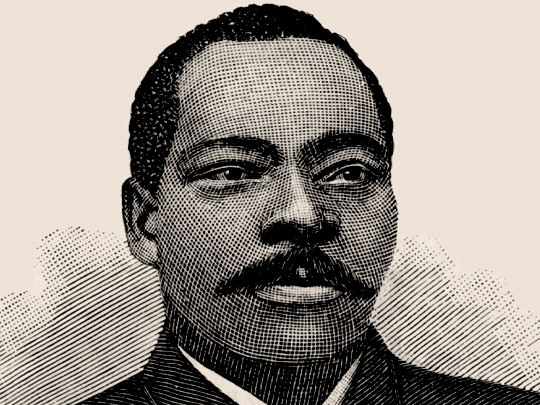A.F. Bradley / Wikimedia Commons / CC-BY-SA-3.0 / GFDL
Mark Twain
(Writer)
30 November 1835 – 21 April 1910 (Aged 74)
Born in Florida, Missouri. Died in Redding, Connecticut.
Born Samuel L. Clemens, he is most famous for the novels, ‘The Adventures of Tom Sawyer’ and its’ sequel, ‘Adventures of Huckleberry Finn’.
In his early life, Twain started out working for a printer, before becoming a riverboat pilot until the Civil War broke out.
Clemens was a member of a volunteer Confederate unit for a short time before it disbanded. He proceeded to head out west to try his luck prospecting for silver and gold.
However, at the age of 27, broke and needing a job, he turned his hand to journalism, where Clemens chose the pen name, Mark Twain.
Twain went on to become an American institution, enjoying huge success as a writer, however, his private life saw much struggle and heartbreak.
Poor business investments saw him go into debt, while three of his four children died at a young age, his son, as a toddler, and two daughters, aged 24 and 29.
Twain died of a heart attack at the age of 74.
Leo Tolstoy
(Author)

9 September 1828 – 20 November 1910 (Aged 82)
Born in Tula Province, Russia. Died in Astapovo, Russia.
Tolstoy was an acclaimed Russian author, whose best-known novels include ‘War and Peace’ and ‘Anna Karenina’.
At the age of 82, Tolstoy died of pneumonia. He is widely regarded as one of the greatest authors of all time.
Florence Nightingale
(Nurse)

12 May 1820 – 13 August 1910 (Aged 90)
Born in Florence, Italy. Died in London, England. Nightingale was a renowned pioneer of modern nursing.
Nightingale was known as the ‘Lady with the Lamp’, due to her nightly rounds caring for injured soldiers during the Crimean War, which lasted from 1853 to 1856.
During the war, Nightingale kept meticulous records of the causes of illness and death and the efficiency of the medical staff, leading to a Royal Commission basing its findings on her statistical data and analysis.
In 1860, Nightingale laid the foundation of professional nursing, establishing her nursing school at what is now part of King’s College London. It was the first secular nursing school in the world.
Among her social reforms were improving healthcare for all of British society, advocating better hunger relief in India, and expanding female participation in the workforce.
Nightingale died in her sleep at the age of 90. Her family declined the offer of burial in Westminster Abbey and she is buried in the graveyard at St Margaret’s Church in East Wellow, Hampshire.
The Florence Nightingale Medal is the highest international distinction a nurse can achieve, named after Nightingale in recognition of her pioneering work.
Granville T. Woods
(Inventor)

23 April 1856 – 30 January 1910 (Aged 53)
Born in Columbus, Ohio. Died in New York City, New York.
Woods was a prolific American inventor who registered over 60 patents during his lifetime. He is best known for his work with electricity in the late 1800s.
Among his most notable, was the Multiplex Telegraph, which sent messages between train stations and moving trains. He is also credited with improving the third rail, helping subways to operate electrically underground.
In spite of gaining a reputation as the “Black Edison”, Woods was buried in an unmarked grave after dying of smallpox on 30 January 1910. A headstone was finally erected in 1975.
Edward VII
(British King)

9 November 1841 – 6 May 1910 (Aged 68)
Born in London, England. Died in London, England.
Edward VII was the British King, who succeeded Queen Victoria to the throne, following her death in 1901.
Edward’s 59 years as heir apparent was the longest in British history until he was surpassed by Prince Charles in 2011.
